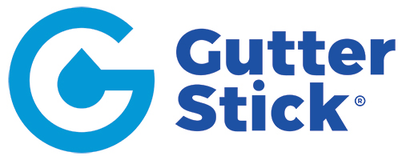
Performing a soft wash on your roof is a great way to remove the build up of moss and mildew that can form on your roof. Before performing the cleaning process, you’ll need to apply a pre-treatment to loosen up the moss and mildew.
Chemicals used
Whether you need to clean the roof of your house or a commercial building, there are a variety of chemicals you can use to get the job done. Some of these products are safe, but others can be harmful. It’s important to read the instructions before using them and wear appropriate protective equipment. This will help ensure that you are not injured, and that your neighbors and pets are not exposed to the toxic fumes.
One common chemical used for cleaning a roof is sodium hypochlorite, which is a bleach. This product is effective at breaking down stains caused by fungi and algae. This is because it has an oxidizing effect. It also prevents new stains from appearing, as it kills fungi and algae cells.
Another popular chemical for roof cleaning is hydrogen peroxide. It is a form of oxygen that is diluted with water. It has the potential to kill moss and mold. It is very effective, but it must be applied in small amounts. It is best if you wear gloves and a mask to protect yourself from the effects. The active life of hydrogen peroxide on a roof is 4-6 hours.
Other common chemicals for cleaning a roof include sodium hydroxide, which is a caustic that dissolves dirt and soil. It is a great choice for walkable roofs, since it requires less physical agitation. It is also easy to transport. Some contractors prefer sodium hydroxide because it rarely causes problems with plant life near the roof.
Other chemicals commonly used for soft washing a roof are acids and surfactants. These chemicals are commonly used to remove stains from asphalt shingles. They also have the added benefit of making the surface more resistant to water.
Sodium percarbonate is another roof-cleaning chemical that is environmentally friendly and is less harmful than other chemicals. It is a strong, corrosive substance that can break down rust, algae and other debris. The product is also resistant to UV rays, so it will not fade the color of your roof.
Another common chemical is TSP, which is a strong, salty liquid that works well at removing stains. It should be applied with a soft brush, and it is best combined with water. Unlike sodium hypochlorite, TSP is a cationic surfactant. It has a positive charge, which makes it work better in the presence of moisture.
For more stubborn stains, you can mix a few different chemicals together. This will give you more flexibility as to how to get the job done. This type of roof cleaning will also take less coats. It’s also more cost effective. It is also safer to use for asphalt shingles, since it doesn’t have the potential to damage the finish of the roof.
You should also be aware that certain chemicals can be harmful to plants and wild animals. If you have a pet, make sure to keep it away from the area during the cleaning process. You should also consider wearing heavy-duty gloves and long sleeves.
Pre-treat the roof with water to remove loose moss and mildew
Getting rid of moss and mildew on your roof is an important step to keeping your home’s exterior and structural integrity intact. Moss can cause a number of different problems, including degrading shingles, wood and concrete. In addition, it can lead to mold and fungi. If left untreated, it can also affect the health of your family. There are a number of ways to get rid of moss, but you must follow the product’s label instructions to ensure a safe and effective procedure.
First, you should take note of your roof’s elevation. North-facing roofs, especially in colder, damp climates, are more susceptible to moss. This is because moss thrives in areas that receive minimal sunlight. You can avoid this problem by installing zinc-coated sheet metal, or by cutting down trees that are blocking natural light.
If you are in a humid or wet area, it is important to treat your roof at least once a year to prevent a moss infestation. You can do this by applying a solution to the roof and leaving it to settle for 20 minutes. You can use a garden sprayer to apply the product, or you can purchase a ready-made cleaner that hooks up to a hose.
Next, you should wet the shingles thoroughly with water. Then, scrub the roof with a long-handled, soft-bristle brush. Be careful not to damage shingles as you scrub. You should start from the top of the roof and work downward. This will help avoid lifting the shingles, which will allow the moss to continue to grow underneath.
After you have cleaned the shingles, you should apply a moss remover solution. This is typically a 50/50 mixture of water and chlorine bleach. Leave it to settle for about 20 minutes and then rinse off. You may need to use a pump sprayer to apply the solution. However, a backpack type sprayer will be safer for you on a ladder.
If you decide to use a liquid roof cleaner, you must ensure that the solution does not evaporate before killing the moss. You can also mix a solution of chlorine bleach with a heavy-duty cleaner, like Dawn dish liquid. You can even make your own moss remover with household ingredients. You can also buy moss remover chemicals in stores.
To avoid scrubbing your roof too hard, you can use a putty knife to gently scrape away the moss. If you don’t have a putty knife, you can use a sharp edge of a scraper like a dental pick. You can also use a pressure washer. Power washing can strip off the mineral granules and make the shingles more vulnerable to moss.
If you live in a very humid or wet area, you should consider applying a solution of a bleach and water mix. This will kill the moss and prevent it from growing again. If you use a garden sprayer, you should apply the solution to the shingles, and then wait about 20 minutes before rinsing the solution off.
Pressure washing vs power washing
Whether you’re in the market for roof cleaning or looking to maintain the exterior of your home, it’s important to know what the difference is between power washing and pressure washing. Not only are they different in name, but they also have their own strengths and weaknesses. While both can get the job done, they’re not meant for every job. Fortunately, the professional cleaners at Waterproof Caulking & Restoration are ready to tackle your needs. They can also help you make sure your project is eco-friendly, or at least as environmentally-friendly as possible.
The most important factor to consider when comparing power washing and pressure washing is the water temperature. Generally speaking, the hotter the better when it comes to removing tough messes. The combination of heat and pressure may be the best way to remove stubborn stains from concrete, but they can also cause damage to delicate surfaces. The trick is to find a cleaner who understands the best way to approach your particular project.
The other major difference between power washing and pressure washing is the amount of soap and water they use. A pressure washer uses less soap than a traditional garden hose. In fact, the detergent is usually applied after the cleaning process is completed. The detergent loosens particles for easy flushing. Although the detergent is a big part of the equation, you can actually get the same results by soaking the area with soap. Unlike a traditional hose, a pressure washer uses a higher PSI to break up the dirt, making the job much faster and easier.
While both techniques are effective in their own ways, the real winner is probably the soft washing. Typically, a soft washing cleaner will be able to spray 30 to 40 feet off the ground, while a power washer is best suited for jobs that require the highest of pressure. In the process, they will kill any active growths, and can even clean window seals and gutters.
The most important thing to remember is to choose a cleaning service that carries the appropriate insurance. Not only will you get a clean house, but you’ll know that your cleaning team is taking safety seriously. It’s a good idea to use gloves and other protective gear, and avoid ladders. It’s also a good idea to remove any pets or children from the area.
While it might seem counterintuitive, the most successful and most impressive power washing or pressure washing will likely be the one that has the most safety and quality assurances in place. Your professional cleaner will be able to recommend the right equipment, and make sure that your home is cleaned in a safe and efficient manner. Keeping your siding and roof clean will not only make your house look great, but it will also help you keep your home’s resale value intact.






